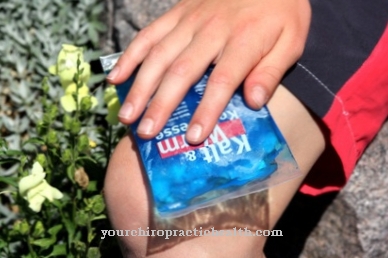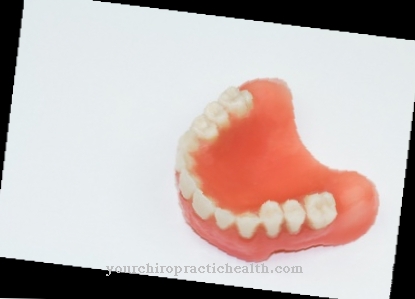For diagnostics and therapy planning, a dimensionally accurate impression of the teeth is made in dentistry. Such situation models provide an exact copy of the tooth structure and the jaw sections adjoining there. An impression is made of the jaw or a certain row of teeth, or better said, a negative form, with certain Impression materials such as B. alginate or plaster of paris can be used to obtain an inverted copy of this form, the negative form of the jaw. The defective prosthesis or the dental prosthesis is then manufactured by a dental technician from this model created from the impression.
What are impression materials?

In dentistry, a distinction is made between elastic and rigid impression materials. The rigid material gypsum z. B. is used to determine the position of the teeth more precisely, elastic impression materials in turn are used for the actual production of the tooth models and are made from natural or synthetic polymers that are solidified by chemical or physical conditions.
In order to be able to create an impression, the dentist needs material that has a soft surface so that the area to be examined and used for the impression can leave the exact and detailed shape through contact. After the patient has bitten on the impression material, it must be easy to separate it from the teeth and at the same time maintain its shape, i.e. not be destroyed during removal. Various materials that are thermoset or thermoplastic or consist of a solidified liquid are used for this.
Shapes, types & types
After the impression has been taken from the mouth, the finished impression is cleaned of all saliva residues under running water and checked more precisely for the possible implementation and usefulness of a model creation. All rows of teeth and the necessary toothless sections of the jaw must be fully visible through the impression and must be clearly marked. If, for example, air bubbles are present, these will turn into plaster beads in the finished model and prevent the exact assignment of the impression model.
The tooth and jaw impression must therefore be accurate to the drawing and must not show any change in surface shape. Therefore, dentistry makes use of various impression materials that meet these requirements. These are plaster of paris, wax, alginate, silicone, hydrocolloid and polyether.
It is important that impression materials flow well while tolerating moisture in order to obtain the desired accuracy of the boundaries of all tooth structures. This is the only way to later make a denture from the impression that fits exactly into the mouth area.
Furthermore, the material must be able to cure quickly after the impression, while at the same time there must be enough time to be able to process the material. Each impression is filled with plaster of paris after it has been removed and solidified. The dental technician creates the prosthesis or dentures from the plaster model.
Structure & functionality
One of the widely used materials is alginate. It belongs to the elastic natural materials, consists of seaweed and seaweed and enables an elastic-irreversible impression. Alginate is mixed with water to form a paste that becomes an elastic gel. Physiologically, the material is harmless and its structure enables high accuracy and the desired level of detail.
In order to separate substances from one another and thus prevent them from mixing or combining, alginate solutions are also used in model production. The plaster of paris model is then coated with the alginate insulation and certain shapes are created with acrylic, which can easily be removed from the plaster model. The alginate impression, however, must be quickly filled with plaster of paris, as the material changes volume due to moisture loss.
Hydrocolloids in turn form colloids in combination with water and are thus malleable. These are also based on alginate. The gel-like material is heated and therefore viscous. While the impression is being taken with hydrocolloid, it changes back to a weakly elastic state as the impression tray is cooled with water. The same level of detail is given as with other impression materials, but the model must be filled with plaster immediately, as the hydrocolloid cannot be stored and shows a high loss of moisture. If the impression is not made quickly enough, it can mix with the plaster of paris and the appearance of the oral cavity is falsified. On the other hand, molding compounds made of hydrocolloid, in contrast to alginate mixtures, are reusable. The gel is returned to its liquid state in the water bath.
Important synthetic materials are also polyethers and silicones which, on a chemical basis, fulfill their purpose in dentistry. Silicones are divided into A-Sillikone and K-Sillikone, i.e. in addition and condensation-curing silicone impressions. They are used both to take an impression of prepared teeth and to show the areas of the mucous membrane and can be easily disinfected. Polyether materials, in turn, have hydrophilic material properties and can reproduce the position of the teeth well, especially in the very watery mouth.
You can find your medication here
➔ Toothache medicationMedical & health benefits
Most impression materials consist of two different components that are mixed and hardened immediately after processing. Some dental practices mix the material themselves, whereby the exact concentration must be adhered to so that the impression does not warp. The result would be a leaky or incorrectly fitting denture.
In general, impression materials make it possible to restore strong teeth. Caries, artificial tooth crowns, bridges and also braces can be made to fit exactly so that the patients can maintain both the chewing force and the aesthetic appearance of the teeth.



























